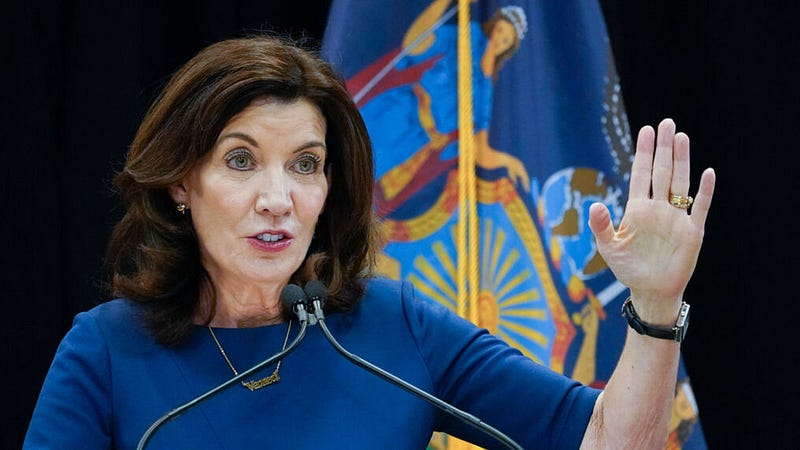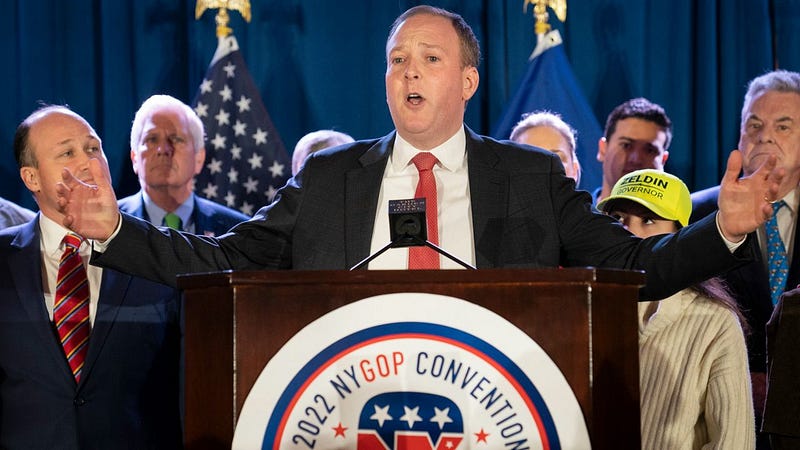
In about seven months, New Yorkers from Buffalo to Riverhead will head to the polls to select the next governor of the Empire State. If you are a New York Democrat, you are used to winning. Republicans have not won a statewide race since Governor George Pataki’s reelection in 2002. If anything, the real race takes place in June during the Democratic primary. With the state facing rising crime, inflation, an unpopular White House and the specter of the ousted Andrew Cuomo, Democrats are in for an uphill battle. Meanwhile, Republicans have a potential playbook for victory using the same educational culture war that clinched the Governor’s race in Virginia and nearly that of neighboring New Jersey. With all this at play, these are the candidates for the New York governorship.
The incumbent governor Kathy Hochul is seeking election. The Buffalo native arose to the post in August of last year after a sexual harassment scandal forced Cuomo to resign. Her term has focused on seeking to steer the state’s economy through a pandemic recovery, while also building a case for her own re-election. She sits in an awkward and unprecedented position: a governor for whom nobody has ever casted a vote. Carrying the baggage of being attached to Cuomo does not help her either. With these obstacles, while ostensibly being the frontrunner, she faces primary challenges from both the right and left of her party.
From Hochul’s left is New York City public advocate Jumaane Williams. Williams is a former activist whose work has focused on tenant and immigrant rights. A self-described democratic socialist, Williams positions himself as the progressive’s leading candidate in the race for governor. He has received the endorsement of the left-leaning Working Families Party. His platform includes expanded public housing, a progressive tax structure, universal healthcare, continuation of New York’s controversial bail reform law and protection of the environment. In short, he is roughly the American progressive’s dream candidate for the governorship.
Part of the complexity in covering a race like this is that New York has three component regions — upstate New York, NYC and Long Island — and each of them have competing interests. Williams is clearly courting progressives in NYC and the state’s other urban parts, but his proposals to increase property taxes and his stances against police are unpopular in the suburban parts of Long Island and upstate New York.
From the right of Hochul is Nassau County Congressman Tom Suozzi. Suozzi refers to himself as a “common sense Democrat” who is opposed to the leftward flank of his party. He opposes New York’s bail reform and has used it to criticize Governor Hochul. His other policies include greater gun control, cutting property taxes and a “tough on crime” policing strategy. He also criticized a recent proposal by Governor Hochul to expand accessory dwelling units (detached housing units built in suburban backyards) that he said would destroy single family housing. Like Williams, he seems to have focused on a particular region of the state, that being the wealthy suburbs of Westchester and Long Island. However, it is not clear if his policies will find support in population-dense NYC.
Those are the three main Democratic candidates; now, onto the Republicans. Candidates include Andrew Giuliani, the son of former New York City Mayor Rudy Giuliani, former Westchester County Executive Rob Astorino and Suffolk County Congressman Lee Zeldin. The clear favorite is Zeldin, who has already been endorsed by the New York GOP and New York Conservative Party. Zeldin is trying to create the same kind of shock upset that led to Glenn Youngkin’s victory in Virginia. That is why he too is using the educational culture war to swing voters against mask mandates in schools and diversity initiatives. He is also hoping to use the backlash from the “defund the police” movement to secure the support of powerful police unions. Zeldin is also one of two Jewish Republicans in the House and has used his tenure to support Israel, which is politically beneficial in the most Jewish state per capita in the nation.
There is one elephant in the room regarding Zeldin’s chances, and that is former President Donald Trump. Zeldin was one of Trump’s strongest advocates during both his impeachments, and he likely needs Trump’s endorsement if he wants to win. However, if he embraces Trump too much, he risks alienating voters in a state that overwhelmingly disapproved of his presidency. This balancing act will ultimately decide Zeldin’s fate.
This race will come down to whether the eventual Democratic nominee can unite support across regions and ideologies. There are significantly fewer Republicans in the state with far fewer resources. Those are two major drawbacks, but what they have is unity. Moderates have already expressed discomfort with the prospect of a Williams victory; conversely, in the event that Hochul or Suozzi secures the nomination, the Working Families Party could reject the Democratic candidate (as they nearly did in 2018). Disunity is really the only Republican path to victory, as Zeldin has rejected the kind of pivot to the center that made Pataki a three-term governor. Also, Zeldin’s longtime status as a Trump defender, while helpful in a primary, does not help him in a general where he needs to swing voters. If he, as Youngkin did in Virginia, threads this needle, he may be New York’s next governor. However events play out, all eyes will surely be on Albany.

















